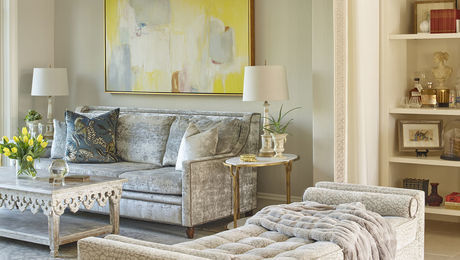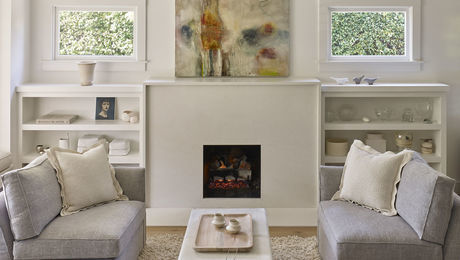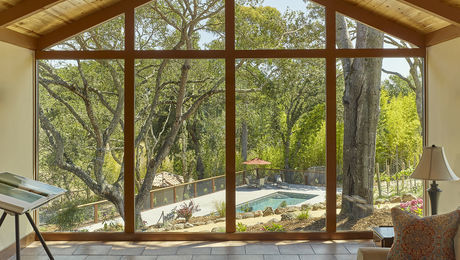Lighting Design for the Living Room
Layered levels of lighting and fixture placement go a long way toward giving this space a whole new look.

Synopsis: With a well-planned lighting design and well-placed fixtures, a room can be more inviting as well as functional for a variety of tasks. Here, a lighting designer explains various lighting choices and how they can be used to create ambience in a living room.
People are drawn to light like moths to a flame. Happily, the results are more beneficial for us. Lighting is a great way to make a home’s spaces inviting, especially when applied to underused parts of the house, such as the living room. By including a number of lighting options in the living room, you can create shifts in mood and ambience; one living room can be the location for the family’s favorite spot to throw a party, to play a board game or to watch a late-night movie together.
Layered lighting gives you options
Like other rooms, living rooms benefit from layers of light: a combination of ambient, task, decorative and accent lighting. When a combination of layers is used, the room becomes more comfortable, useful and interesting. Primary light sources in the living room are usually incandescent and halogen bulbs; unlike the more energy-efficient fluorescent lamps, incandescents are more versatile and are easily dimmed to create different moods.
The first layer is ambient light, which fills the room from nondirectional sources. Commonly a byproduct of other light layers, ambient light is soft, comfortable and free of shadow. Daylight from windows, wall sconces, a torchiere up light, a few table lamps or perimeter cove lights are all sources of ambient light. Controlled with a dimmer, ambient light can be bright enough to read by or soft enough to encourage quiet conversation.
The second layer is accent lighting, important to a living room. A concentrated source that illuminates one object or group of objects, this layer creates the drama in a room. Whether strong accent lighting or a softer wall wash, direct light tends to make the room feel larger. Accent lighting can be used to highlight art above a fireplace, illuminate a display cabinet or highlight the texture of an interior stone wall.
Keep the whole room in mind when choosing lights for any accent application; you don’t want the big lights to overcome the smaller ones. Here, smaller is smarter. For ceiling heights in the 8-ft. and 9-ft. range, it’s better to keep the diameter of the down lights to a minimum; 5-in. dia. recessed down lights are the preferred size. If you use low-voltage accent fixtures, use a 4-in. or 5-in. diameter, and shy away from 6-in. cans, which are too big and register in peripheral vision.
Task lighting, the third level, should be designed with particular activities in mind. Table lamps near a chair or recessed down lights grouped over a game table can provide adequate light. Remember that as people age, their eyes require more light to see, especially for reading.
The fourth level is decorative lighting; the fixture itself attracts attention and can be as simple as a single-candle brass wall sconce or as ornate as a crystal chandelier. These fixtures are often used with a dimmer and should not be used alone to light a room. Think of them as the jewelry, not the outfit.
For more photos, illustrations, and details, click the View PDF button below:


























